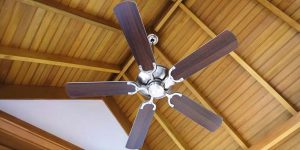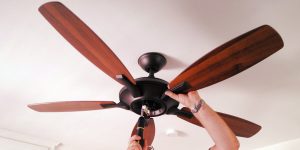From experience, I know that choosing the right fan size is crucial for maximum comfort. The size of your fan should match the size of your room to ensure efficient air circulation. That’s a fact, but how to pick the right model for your exact case? My ceiling fan size guide answers this question.
Everyone knows that a too-small fan will not cope in a spacious room, while one that is too large can be overpowering, noisy and uncomfortable. Thus, the benefits of selecting the proper fan size include better air circulation, improved comfort, and energy efficiency. Furthermore, a well-picked ceiling fan can enhance your space’s style with various designs and looks available.
What to consider when choosing a ceiling fan size?
Firstly, there are several important aspects to keep in mind. So, to answer the question of what size ceiling fan for the roomwould be perfect for you, I first want to list the basic aspects:
- room size.
- the ceiling height.
- fan’s blade span.
Certainly, there are other aspects to consider. Yet, by paying attention to these main parameters, you can ensure that you select a fan that provides optimal air circulation and comfort for your space. In the following part of the article, I will take a closer look at each of them to help you pick the right size ceiling fan for your room.
Measuring room dimensions
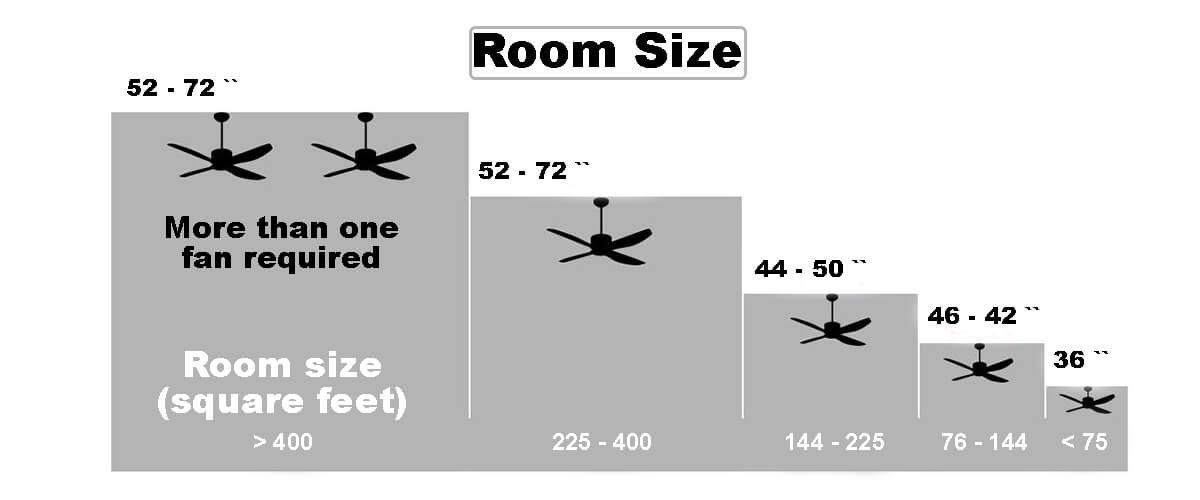
Before making the final decision on a model, it is essential to conduct accurate room measurements. The basic parameters are length, width, and height. They will provide you with the necessary data to calculate the room’s parameters in square feet. In turn, this is essential for determining the recommended ceiling fan size.
I tried using my iPhone to measure the room but still preferred to use traditional tape. Regardless of the preferred method, you need to measure the height from the floor to the ceiling of the room. Once you have these measurements, you can use a simple formula. So, you need to multiply the length and width of the room by feet. Thus, as a result, you will get the footage of the room in square feet. Here, I provide a simple-to-read table to give you a clue about which fan size would be the most efficient choice for your place.
| Room Size (square feet) | Fan Diameter (inches) |
|---|---|
| Up to 75 | 36 or less |
| Up to 144 | 36-42 |
| Up to 225 | 44-50 |
| Over 225 | 52 or more |
Considering room shape and layout
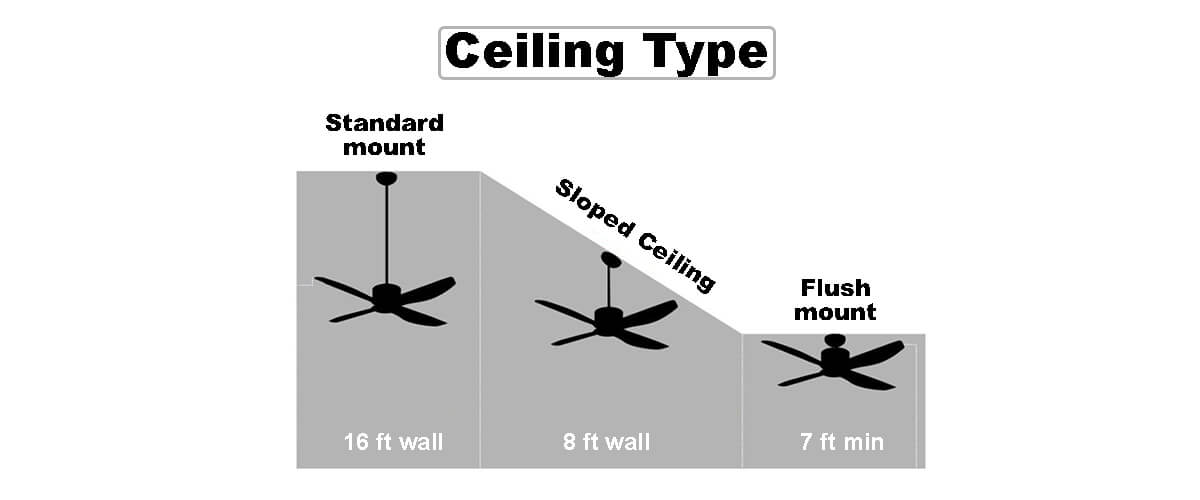
Another key moment to consider is the room’s shape and layout. The room shape can impact the fan’s effectiveness and how well it circulates air. For example, irregularly shaped rooms or rooms with multiple functional areas may require multiple fans to achieve optimal air circulation. That happened to me as I have a non-standard living room layout with a pointy shape. So, I have two fans to ensure quality air circulation. Furthermore, you may need to carefully consider the placement of the fan to ensure that air is circulated throughout the room.
Evaluating ceiling height
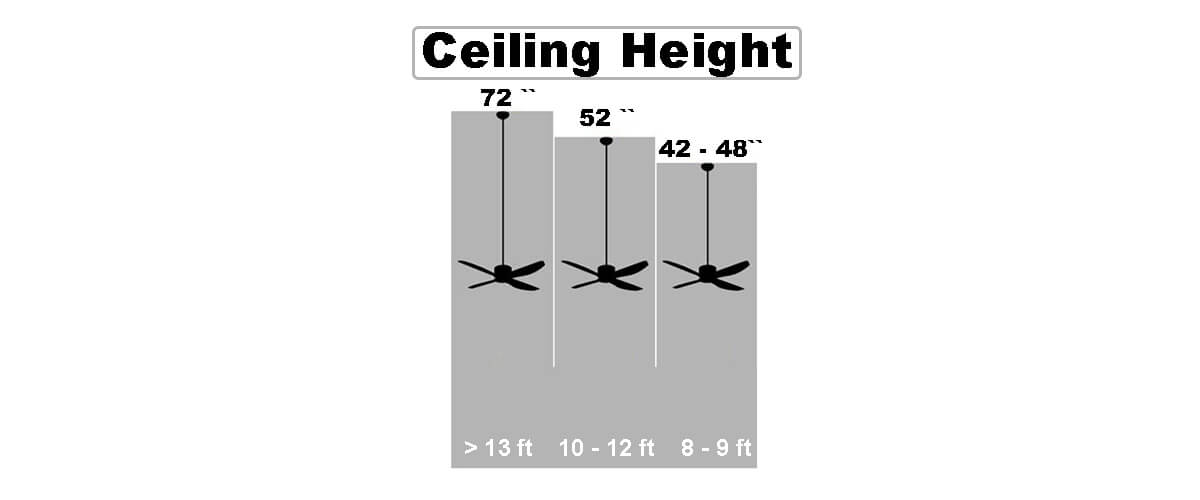
As I have said before, the height of the ceiling also plays an important role. Generally, rooms with higher ceilings require bigger fans to circulate air throughout the available space efficiently. This is because the higher the ceiling, the greater the distance the fan needs to move the air. Here is another simple table for you to be able to pick the proper-sized fan based on the height of your ceiling.
| Ceiling Height | Fan Diameter |
|---|---|
| 8–9 feet | 42–48 inches |
| 10–12 feet | 52 inches or more |
| 13 feet or more | Special downrods or extensions may be needed |
Take note of existing fixtures and furniture
Apart from deciding on ceiling fan sizes and choosing the location for them, it’s essential to take note of any existing fixtures or furniture in the room. Be mindful of potential obstructions that could interfere with the operation or placement of the fan. Those could include ceiling beams, light fixtures, and even tall furniture or built-in wardrobes.
By considering all sorts of potential obstructions, you can determine the most suitable placement for your ceiling fan, ensuring that it operates effectively and doesn’t interfere with any other room elements. Remember that the location of your ceiling fan will impact the airflow direction, so consider the layout of your furniture and other elements in the room when making the decision. Proper placement is key to healthy air circulation in a room.


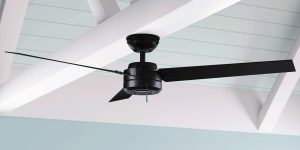
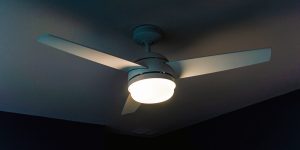

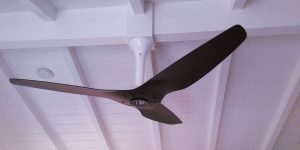


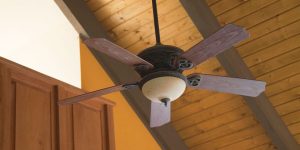

![How Many Blades Should a Ceiling Fan Have? [3 vs 4 vs 5-Blade]](https://www.kennedyproductions.com/wp-content/uploads/2023/08/does-the-number-of-blades-on-a-ceiling-fan-matter-300x150.jpg)
